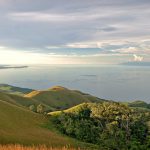 Finally, we are ready! Our next destination: Kabobo massif in the Democratic Republic of Congo.
Finally, we are ready! Our next destination: Kabobo massif in the Democratic Republic of Congo.
Kabobo massif stretches for about 100 km along the western shore of the Lake Tanganyika and it has been naturally separated from northern forests for at least 10,000 years. This region has been identified as an important bird area and It also contains threatened large mammals such as elephants, chimpanzees, lions, hippos as well as other large mammals such as buffalos, bongos, red river hogs and giant forest hogs.
In 2008 Wildlife Conservation Society undertook a socioeconomic survey of the communities living around the Kabobo massif and showed that people were very poor, even in comparison with most communities in eastern DR Congo. This survey also asked questions about the conservation of the forest. Most of the people interviewed were in favour of creating a protected area for the forest and 85-90% suggested that national park status would be preferable because it would bring development to their area.
This time Gene has a bigger challange. We are going to spent a whole month there, we are in a very remote area and we have decided to sequence species belonging to different taxonomic groups (mammals, birds, reptiles, amphibians, arthropods) that we will encounter in the field. Then, locally (off-line) we will compare the genetic similarity of the obtained sequences agaisnt our databases and GenBank.
This rapid molecular diagnosis will allow us to understand the significance of our findings in real time, and it will allow us to assess whether our specimens belong to an already known species or to a new taxon. It will be the very first time that this technique will be applied in the field to such a broad range of organisms.
Even if we will be in the middle of the jungle we will try to post updates about our work, so…stay tuned!



